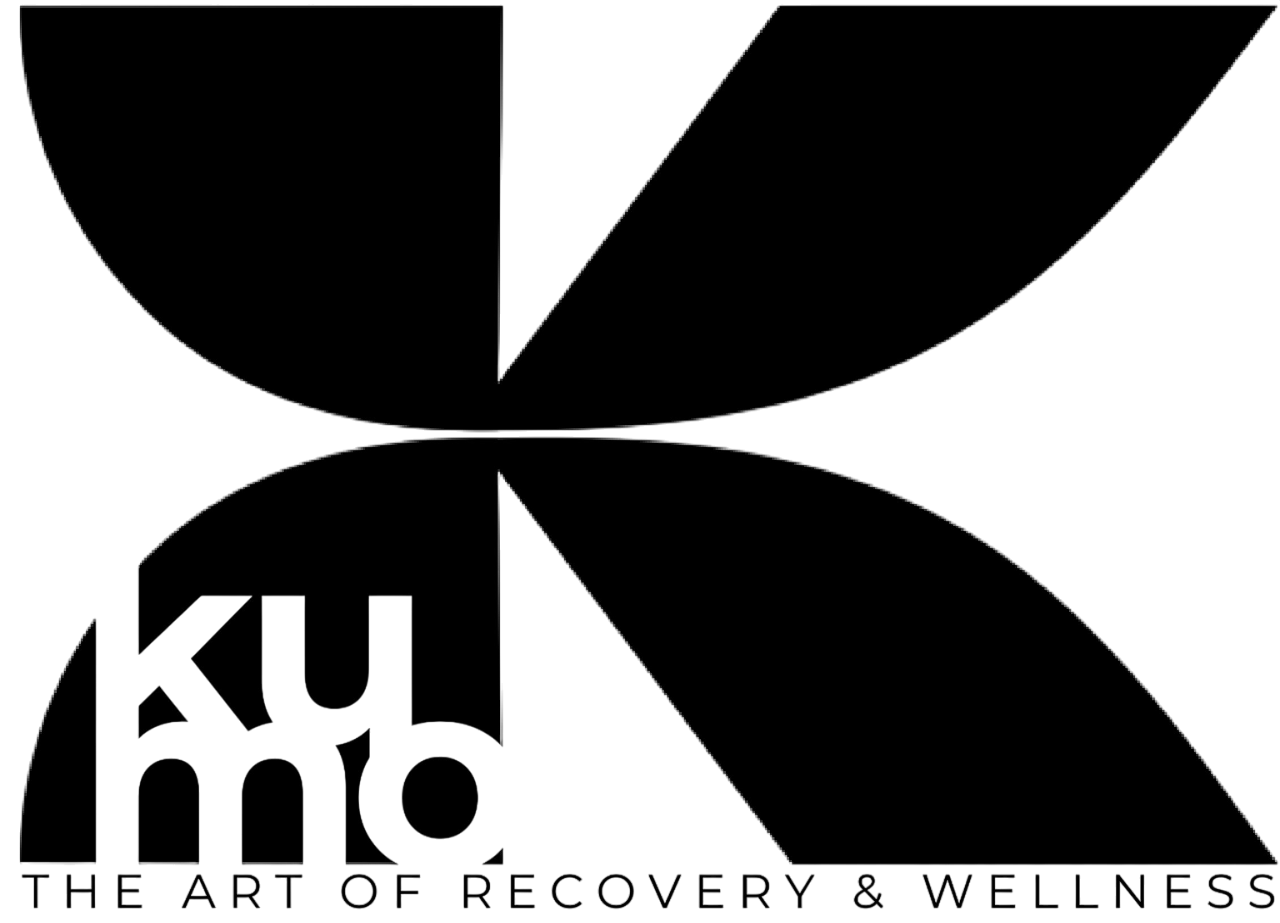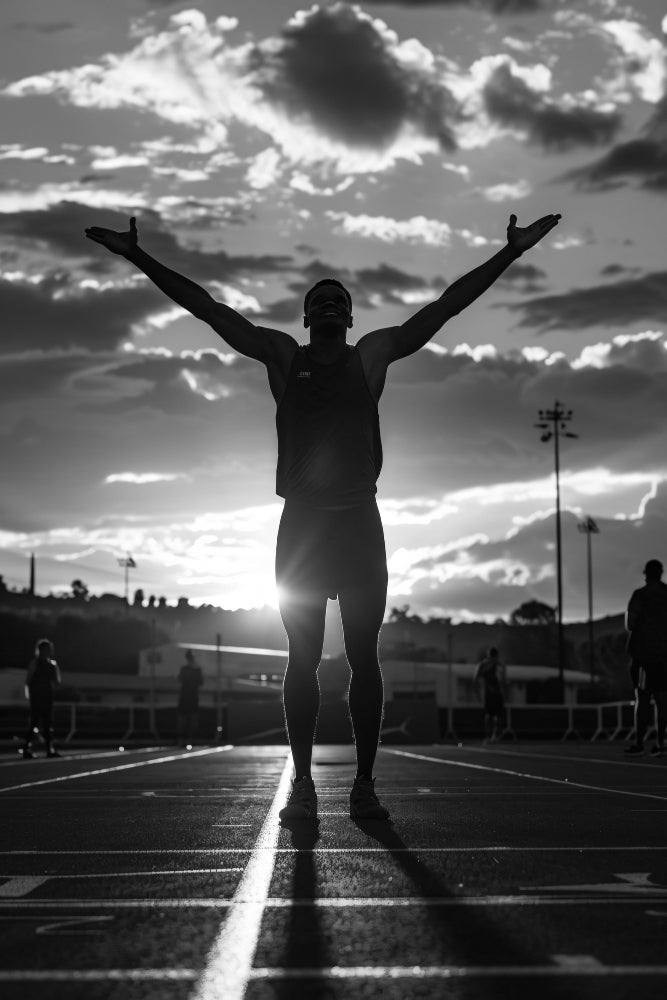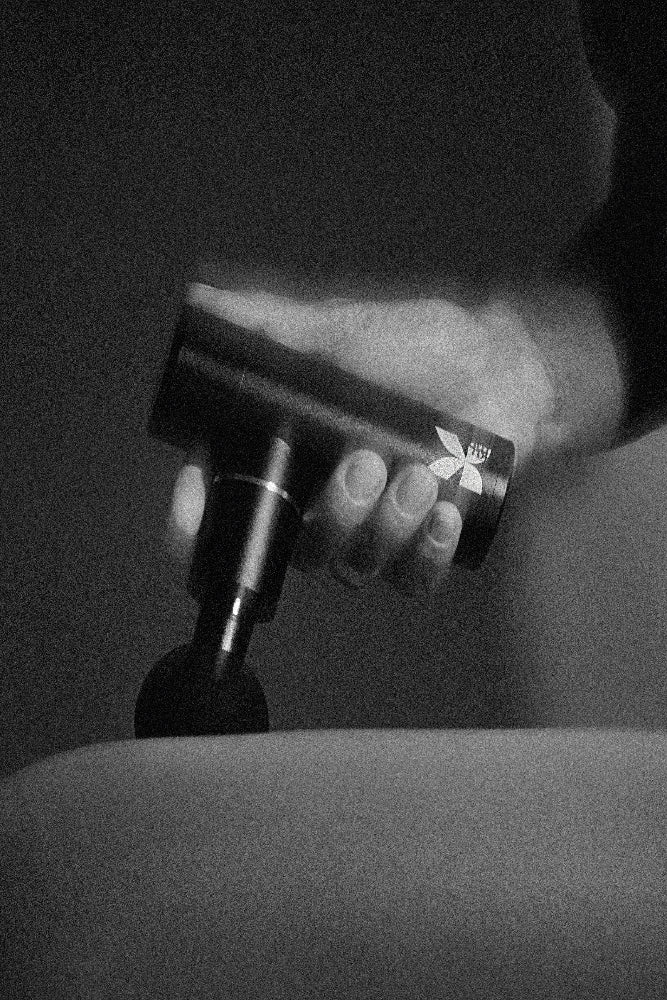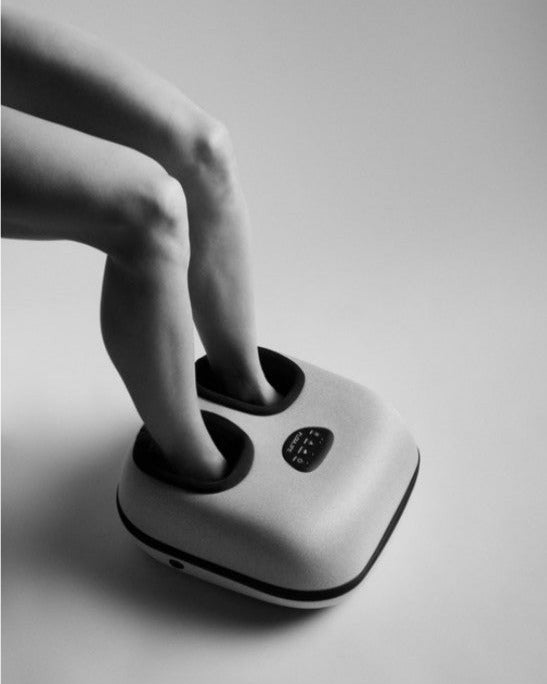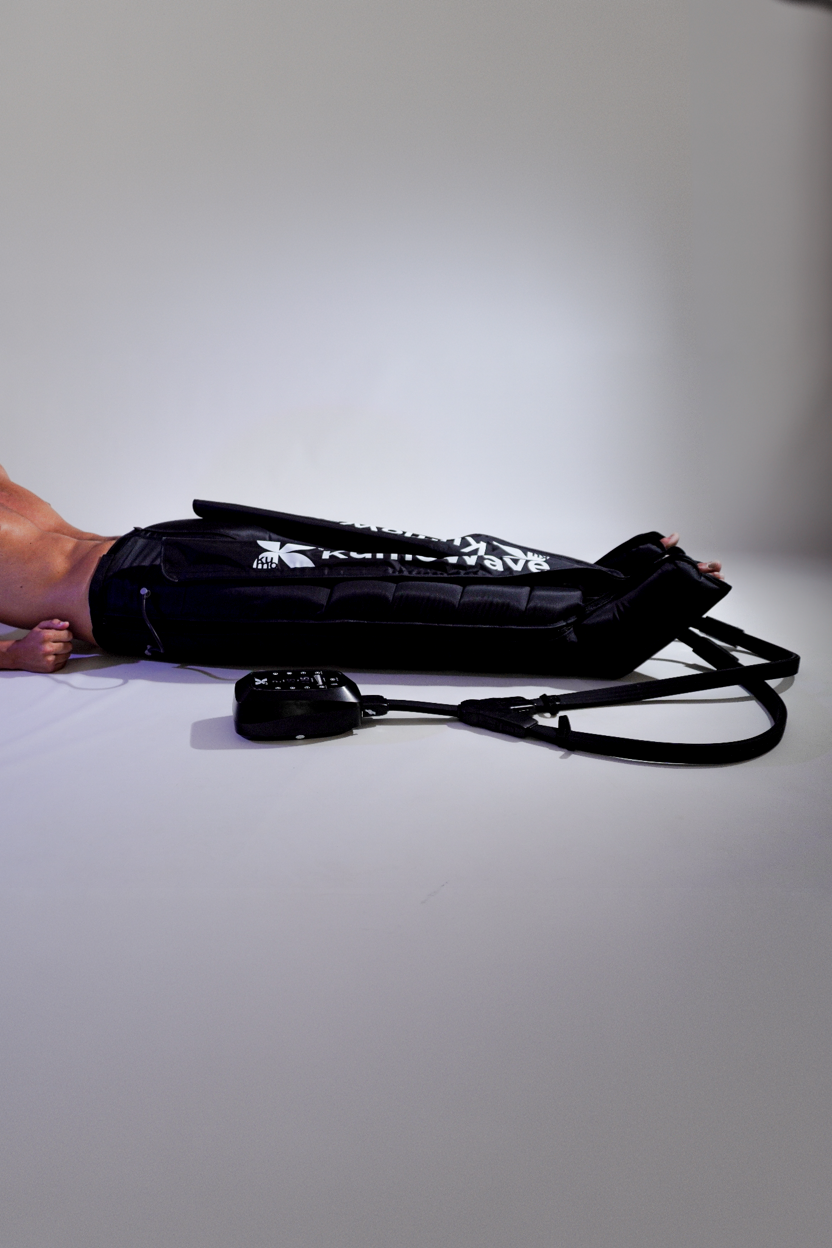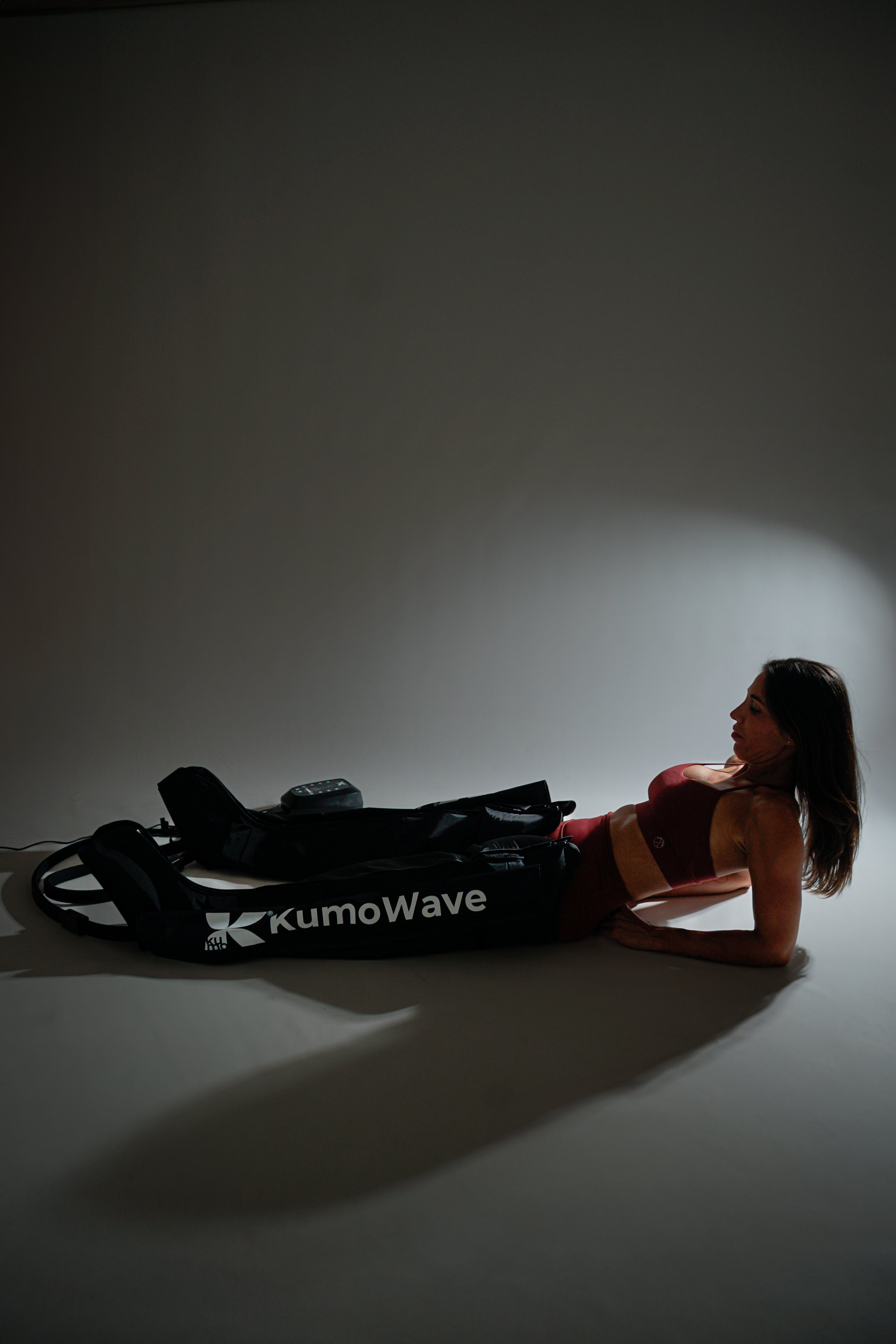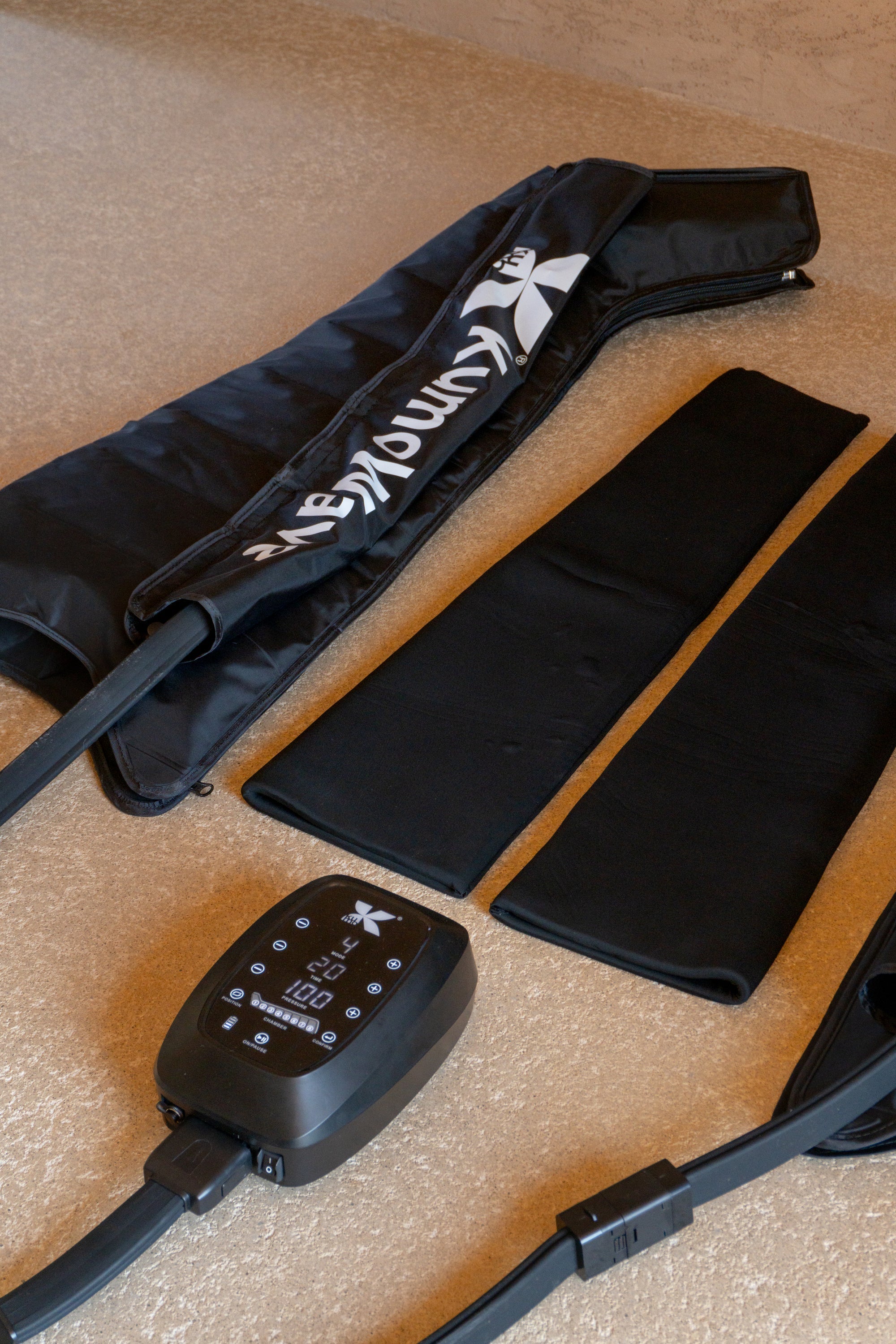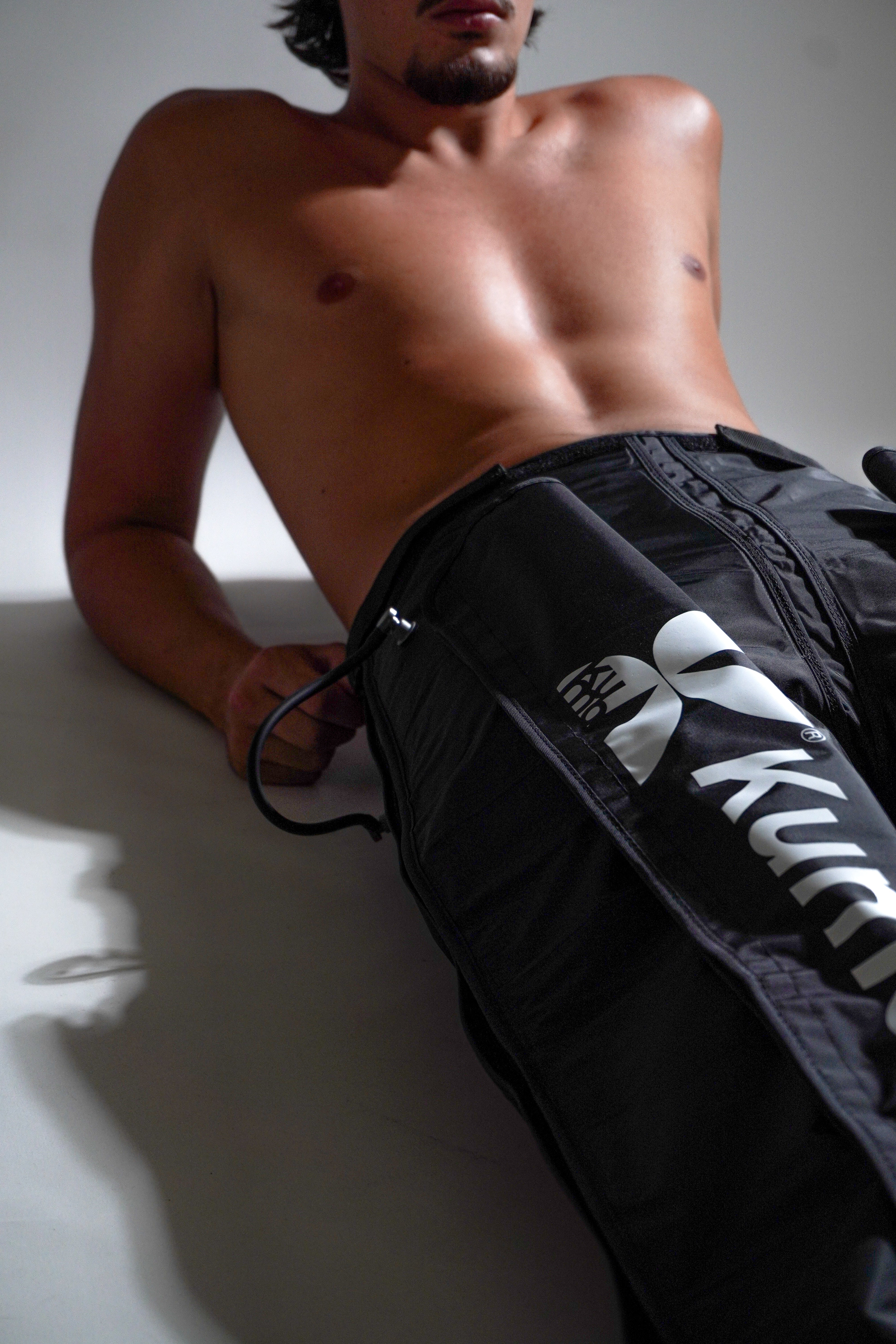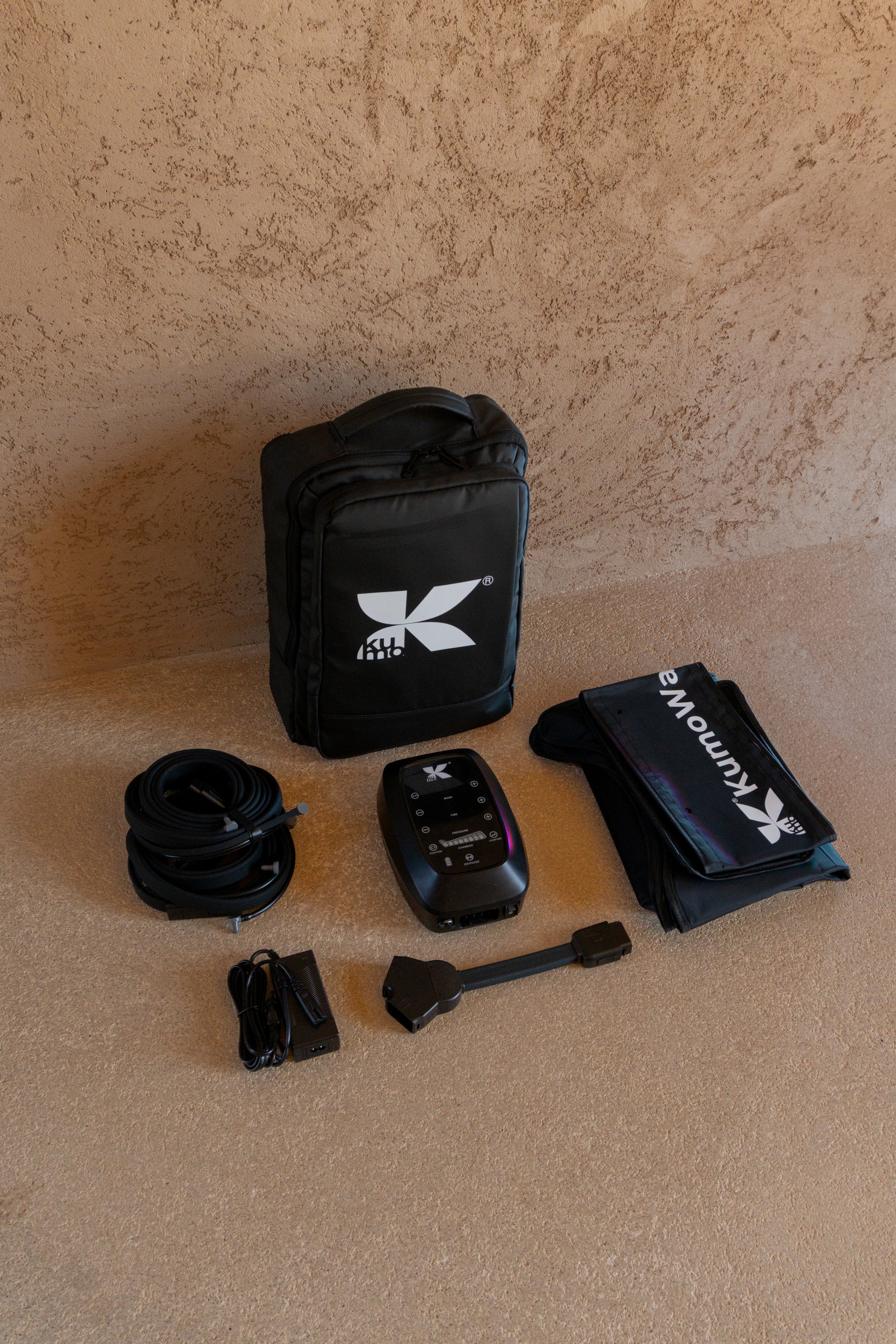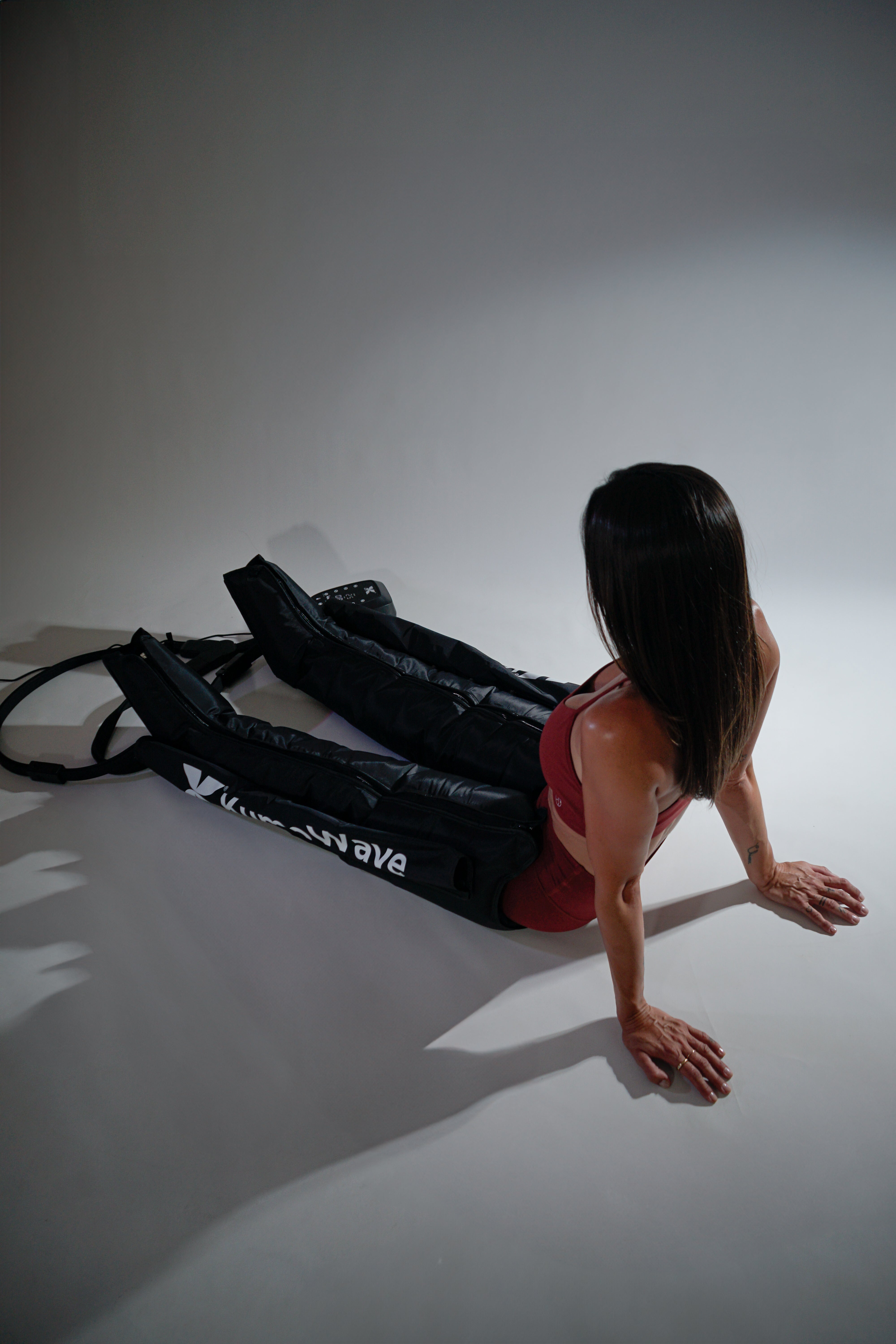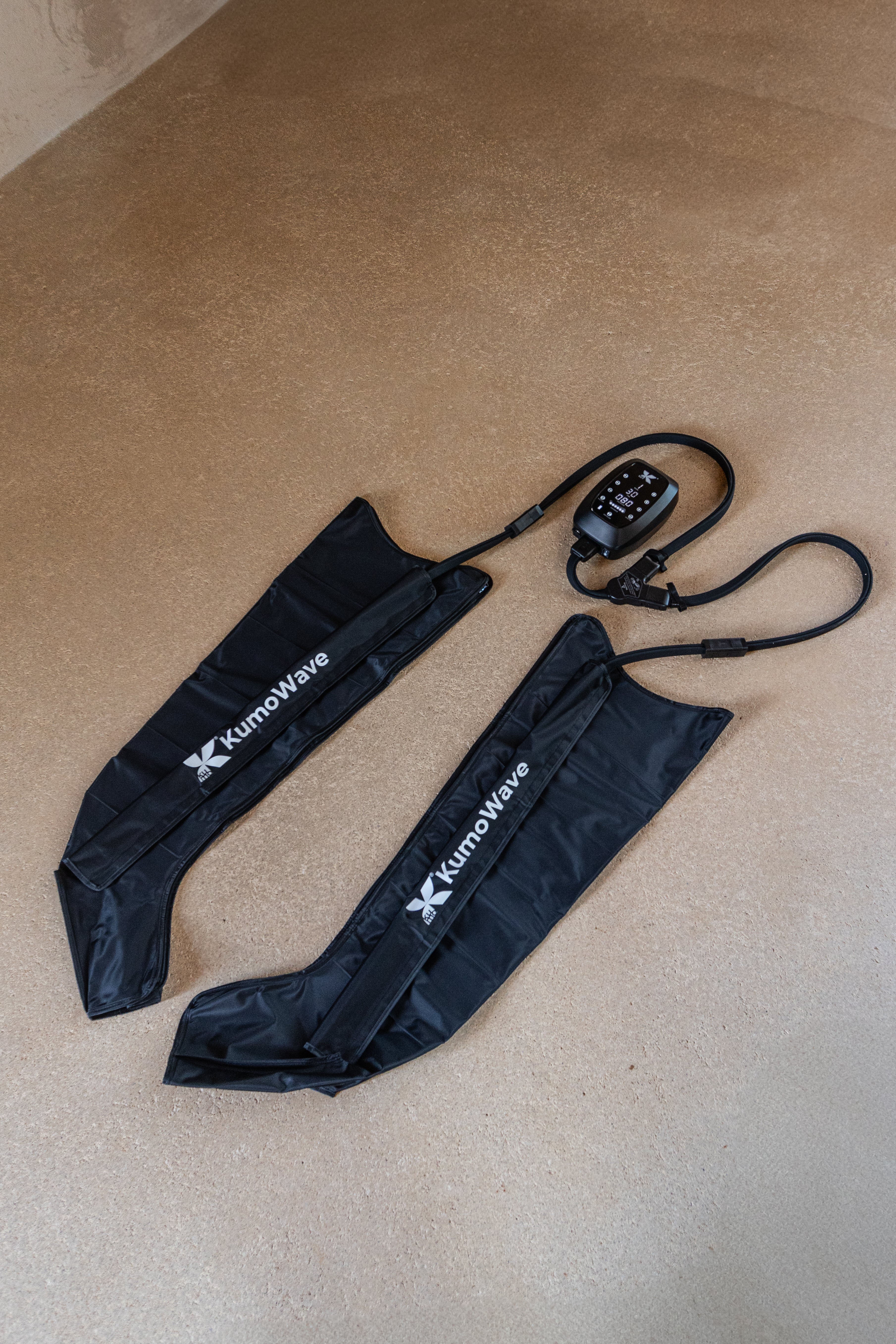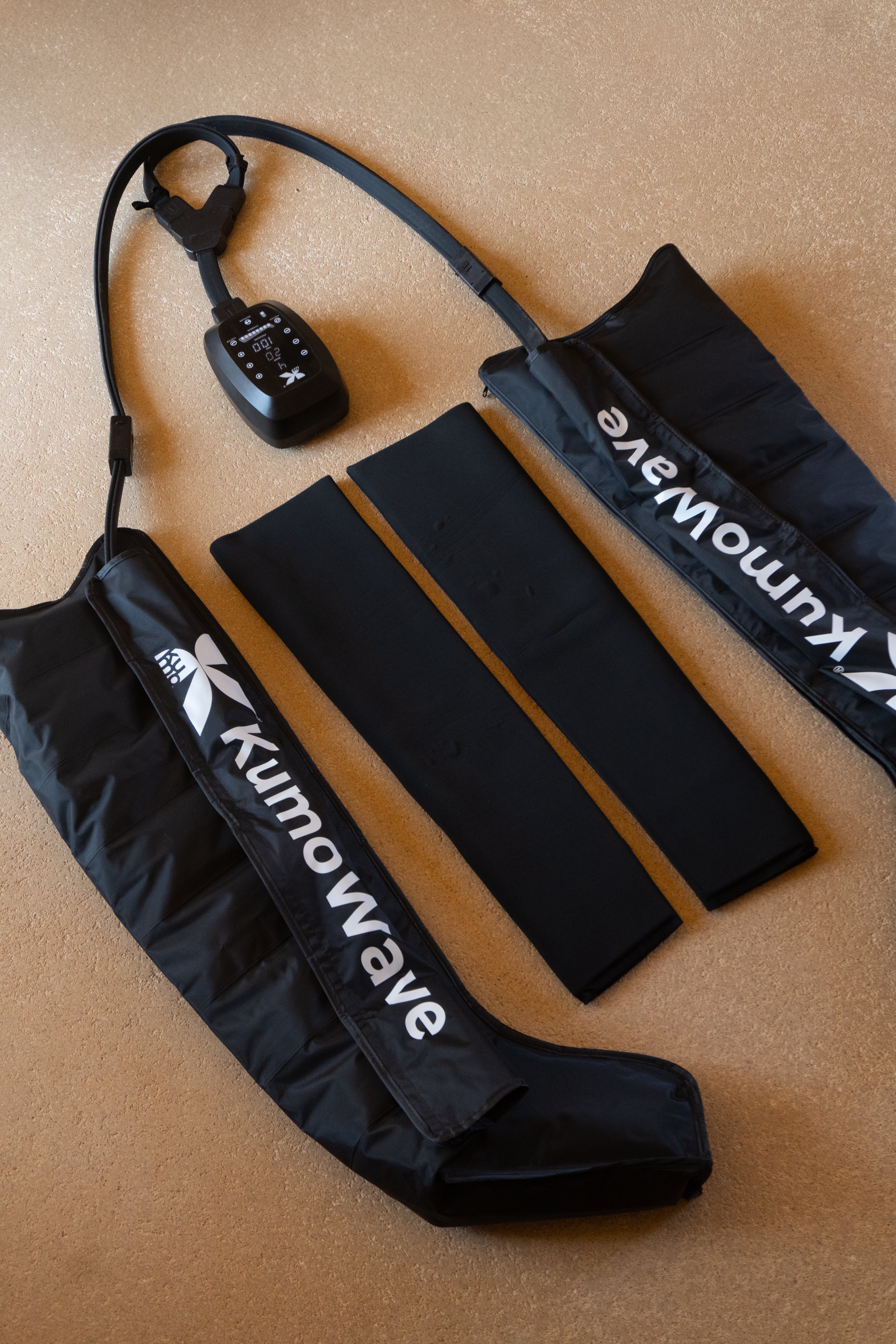Pressotherapy boots: A clear, step-by-step guide for using them at home safely. In this guide, you'll learn how to prepare for your session, adjust pressure and programs, how long to use them, how often to use them, and how to combine them with other recovery tools.
Coming soon
- Choose the sequential program and start with low-moderate pressure: gradual progress.
- 15–30 minute sessions, 3–5 days/week for recovery and light legs.
- Legs raised 10–15 cm, without pain or numbness: comfort first.
- Hydrate before/after and add gentle mobility afterward.
- Avoid use with DVT, infections, or heart failure; consult if you have any questions.
What are pressotherapy boots and how do they work?
Intermittent pneumatic compression (IPC) boots inflate and deflate in chambers in sections, creating sequential, graduated pressure from the foot toward the thigh. This pattern promotes venous and lymphatic return, decreases the sensation of heavy legs, and can accelerate recovery from exercise. Compression therapy is a recognized technique in vascular health and edema management, with decades of clinical and athletic use. For a physiological basis and general benefits, review the Cleveland Clinic's description of compression therapy. in this clinical guide .
Before you start: safety checks
Before using pneumatic compression at home, review the contraindications and warning signs. Avoid using it if you have current or suspected deep vein thrombosis (DVT), active skin infections, open wounds, decompensated heart failure, severe arterial ischemia, neuropathies with loss of sensation, or unexplained leg pain. If you have any medical questions, consult your doctor first. As a risk factor, thromboembolic events are common (on the order of hundreds of thousands of cases annually in the US), so caution is essential; more information on the page of the CDC on DVT and pulmonary embolism . For a physical therapy overview of CNI, you can expand on this. Physio-Pedia .
Step-by-step guide to using pressure therapy boots at home
1) Preparation of space and body
- Hydrate (1 glass of water) and empty your bladder before starting.
- Wear thin, seamless clothing on your legs; remove oily creams to avoid damaging the cuffs.
- Find a firm surface where you can lie down and elevate your legs 10–15 cm.
- Check that the hoses are not kinked and that the compressor is vented.
2) Correct placement of boots
- Choose a size that covers the entire foot to the groin without excessive wrinkles.
- Insert your foot all the way in, close zippers/velcro without strangling.
- Connect the air hoses without twisting; check the safety lock.
- Lie on your back; place a cushion under your heels or calves to elevate them.
3) Program and pressure selection
- Program: Sequential/gradual mode is the most versatile. Wave or peristaltic mode is convenient for gentle drainage.
- Pressure: Start low-moderate and increase in small steps if comfortable.
- Duration: 15–30 minutes per session is sufficient for most home uses.
- Frequency: 3–5 days/week for recovery; daily if you spend many hours standing (active rest).
- Golden rule: It should never hurt or cause numbness. If you experience tingling or paleness, reduce pressure or stop the session.
Quick table of indicative settings
| Aim | Initial pressure | Duration | Program |
|---|---|---|---|
| Drainage/lightness | Low | 15–20 min | Sequential or “wave” |
| Post-workout recovery | Moderate | 20–30 min | Sequential |
| Tired legs after a long day | Low-moderate | 20–25 min | Sequential |
Practical advice: If it's your first time, use the lowest setting for 10 minutes and evaluate your experience. Only move up a level if you're completely comfortable and no bothersome symptoms appear.
4) Signs to watch for during the session
- Desired sensation: firm, progressive and pleasant compression.
- Warning signs: stabbing pain, numbness, cold or very pale skin, persistent cramps; stop the session.
- Breathe normally, avoid crossing your legs, and don't use your phone on the compressed area (it interferes with your posture).
5) After the session: consolidate the effect
- Perform 3–5 minutes of gentle mobility (ankle flexion-extensions, 20–30 repetitions).
- Drink water; if you've been training, add a light intake of protein and carbohydrates.
- A brief percussion massage on tense points enhances muscle relaxation; you can lean on the KUMOPULSE Air massage gun .
- Nearby red light also promotes recovery and sleep; explore the KUMO LED light therapy .
Common mistakes that hinder results
- Using too much pressure from day one: can worsen fatigue and cause discomfort.
- Wrinkled or incorrectly sized cuffs: air is distributed poorly and effectiveness is reduced.
- Excessively long sessions (>45–60 min) on a routine basis: add no benefit and may irritate tissues.
- Apply them just after a heavy meal or with alcohol in your blood: it lowers tolerance.
- Do not clean or air the sleeves: this accumulates sweat and bacteria, shortening their useful life.
Maintenance and cleaning
- After each use, wipe the inside with a cloth slightly dampened with neutral soap; air dry.
- Avoid bleach or solvents; they can damage the cameras.
- Store boots flat or rolled up without any sharp creases; do not strangle the hoses.
- Check the compressor filters if the manufacturer indicates it; replace worn components in a timely manner.
- If you have any questions about maintenance or accessory compatibility, please contact KUMO support from the support page. contact .
How to integrate them into your week (depending on your goal)
Athletes (strength, running, cycling)
- Loading days: 20–30 min, 1–2 h after training.
- Light days: 15–20 min for circulation and rest.
- Microcycles: 3–5 sessions/week; reduces pressure during competition weeks.
Standing or sedentary professions
- After long days or trips: 20–25 min upon arriving home.
- Daily active rest: 10–15 min with low pressure.
General well-being and light legs
- Evening routine: 15–20 min, calm breathing and dim lights.
- Combine 2–3 times per week with red light for recovery and restful sleep.
For compatible options and accessories, visit the KUMO pressotherapy collection or explore the entire recovery universe in KUMO .
Good practices and technical support
- Intermittent pneumatic compression is present in guidelines and reviews for edema management and venous return; its use at home requires common sense and progressive titration (see Cleveland Clinic ).
- Thromboembolic disorders are prevalent, hence the importance of ruling out risk factors before using external pressure on lower limbs (risk review in CDC: DVT/PE ).
- For professionals and curious people, the synthesis of mechanisms, indications and parameters of CNI is well compiled in Physio-Pedia .
FAQ
How much pressure should I use in pressure therapy boots?
Always start at the lowest level that's clearly comfortable for you; the compression should feel firm but not painful or numb. For gentle drainage and lighter legs, most users move in the lower ranges. For sports recovery, it's reasonable to gradually increase to a moderate level if you feel good after several sessions. Adjust by zone if your equipment allows: slightly more for the calves, less for the thighs if there's tightness. If discomfort persists, reduce the pressure or choose a gentler program.
How long and how many times a week is recommended?
For home use, 15–30 minutes per session works well for most goals. As a general guideline, 3–5 sessions per week promote recovery after workouts and relieve leg heaviness during demanding routines. If you spend long periods of time sitting or standing, you can do short daily sessions of 10–15 minutes with low pressure. Avoid chaining very long sessions daily; moderate consistency is more helpful than overdose.
Can I use pressotherapy if I have varicose veins or fluid retention?
Simple varicose veins and the sensation of swollen legs often improve with compression and elevation strategies, but each case is different. If you have been diagnosed with venous insufficiency, lymphedema, a history of DVT, pregnancy, or any vascular condition, consult with your healthcare professional first to adjust parameters and rule out contraindications. Avoid pressure therapy on wounds, infections, or unexplained pain. If you experience pain, numbness, or color changes during the session, stop and reassess.
How is pressotherapy different from compression stockings?
Both apply external pressure, but in different ways. Stockings provide static, sustained, and graduated compression throughout the day. Pressure therapy boots apply dynamic, intermittent, and sequential compression through chambers, generating "waves" that push fluids from distal to proximal. At home, stockings are useful for continuous use and passive prevention; boots are ideal for occasional recovery sessions, drainage, and fatigue relief after exertion or long days.
Can I combine them with other recovery tools?
Yes. Many routines combine 15–20 minutes of boots with 3–5 minutes of local percussive massage on points of greatest tension using a massage gun . The nearby red light can be added later to promote relaxation; explore the LED therapy . Avoid combining overly intense stimuli on the same day (e.g., high compression + deep tissue massage + sauna) if you're sensitive; prioritize comfort and progression.
To take into account
- Start with low pressure and 15–20 minute sessions; progress only if comfortable.
- Elevated legs and tight-fitting cuffs maximize venous return.
- Warning signs (pain, numbness, paleness) require stopping the session.
- 3–5 uses per week are usually sufficient for most purposes.
- Cleaning after each session extends the life of the boots.
- Ready to integrate smart compression into your routine? Discover the KUMO pressotherapy or contact us from KUMO for personalized advice.
